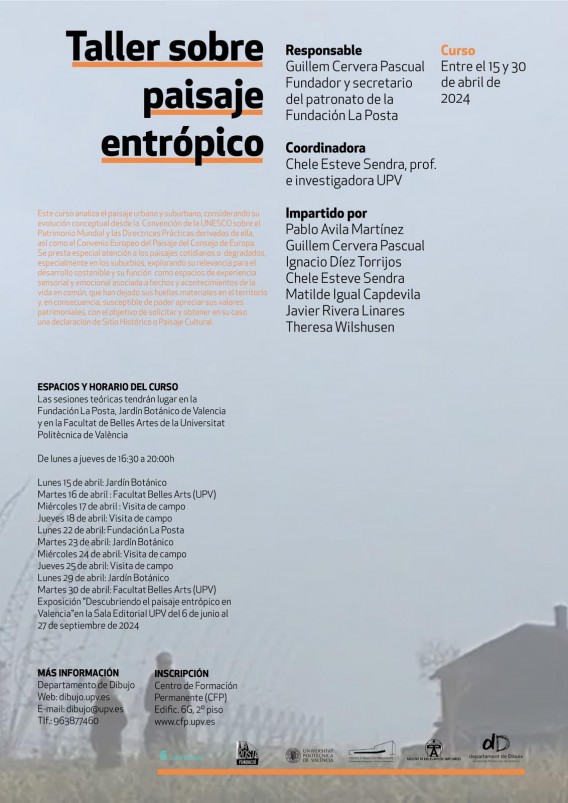Workshop on Entropic Landscape
2nd edition
Registration period opens
Now within the offer of the CFP-UPV Permanent Training Center

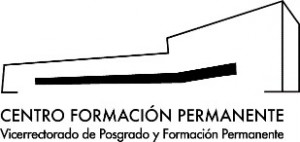
Registration here
INTRODUCTION: ABOUT THE LANDSCAPE
One of the most relevant documents on landscape is the European Landscape Convention, made in Florence in 2000. This Convention includes, within the concept of landscape, also everyday or degraded landscapes, which are precisely those that characterize suburban territories in which an important part of our existence takes place. This workshop refers to those landscapes.

Stills from “Il Deserto Rosso” (1964), Michelangelo Antonioni.
The European Landscape Convention meant formalizing a change that was taking place in the way of perceiving the landscape, a consequence in turn of a change in its conceptualization. In a notable way, and as noted in the Recommendations for the application of the European Landscape Convention (2008), reference is made to the transition between the conceptualization of the landscape almost exclusively as an asset that is part of the collective heritage, from there it was seen in the framework of sustainable development (therefore, also incorporating cultural, social and economic factors) and, from this perspective, as the place of sensory and emotional experience.
From this new perspective, of particular interest are the methodological issues for the treatment of the landscape, which are not limited to protection (which correspond to the consideration of it as a good, with a tendency to equate it to the public domain), but rather also reference to organization and management. This is a terminology from territorial planning, a discipline to which landscape treatment has traditionally been linked, but we could well speak of identification and characterization of the landscape and programming of actions, a terminology more appropriate to the cultural perspective adopted here.
Regarding the methodology, which is the aspect that interests us most ―for the identification and characterization of landscapes―, the Recommendations to which we are referring realize that “the various practices already in progress, experimental or usual, in the different European States reveal a diversity of approaches in the production of knowledge that are a reflection of the diversity of cultural conceptions. However, there is a clear awareness of the inadequacy of the most used theoretical and methodological instruments for the needs of action. Too often they respond to compartmentalized disciplinary universes, while the landscape demands appropriate responses to transversal time and space scales capable of satisfying the need for knowledge of permanent transformations at the local level” (pages 13 and 14).
In this context, this workshop proposal is formulated that seeks, starting from a methodological approach that has the endorsement of several fields of knowledge (the first to take into account that of the visual arts ―not in vain the first theoretical formulation of the concept of landscape was produced in the field of Fine Arts, in which it continues to have a determining role, now reborn in the field of expanded sculpture―, as well as architecture, geography and others), it seeks to generate a powerful school of thought that is capable of leading action in relation to the landscape in various areas and especially in the institutional sphere, particularly with regard to obtaining the declaration of Historical Site or Cultural Landscape (specifically those of a symbolic nature).
PERSONS TO WHOM THE WORKSHOP IS AIMED
Regarding the profile of the participants, the workshop is aimed, fundamentally, although without excluding other groups, at artists or architects who, either from activism or from an interest in contemporary cultural goods (two issues often closely related), want to give you a professional projection by directing your concerns towards a task of analyzing the characteristics of the territory and the landscape in order to reveal its historical, ethnological or anthropological values, and thus be in a position to prepare documents, reports, etc., necessary to obtain from the Administration the declaration of a place as a Historic Site or Cultural Landscape (particularly symbolic), in the context of a growing number of clients interested in these institutional declarations with variable purposes.
Also agronomists and botanists interested in the analysis and valorization of the landscape.
ABOUT A SPECIFIC EXPERTISE FOR THE STUDY AND ANALYSIS OF THE LANDSCAPE AND THE TERRITORY. THE CONCEPT OF ENTROPIC OR DIALECTIC LANDSCAPE
The workshop focuses, as noted in the introduction, on the acquisition of a methodology and specific expertise for the analysis of landscape and territory oriented to action. In particular, of the everyday landscapes, even degraded, that characterize the suburban periphery in which our existence mainly takes place (with overlapping of large infrastructures, abandoned fields in ruins, “clandestine” waste dumps in broad daylight, vestiges of a civilization past that demands the establishment of links with the present time).
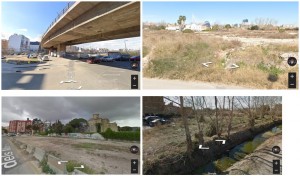
Giorgeta Overpass, Camí dels Rochs, Carrer de l’Alqueria dels Moros and Pedròs Entrance. The latter remembers the landscapes that Robert Smithson visited for his work “A Tour of the Monuments of Passaic, New Jersey,” where he played as a child.
Preliminarily, we can define the specific expertise that the workshop deals with, as that form of analysis of the characteristics of a territory and a landscape through the registration and interpretation of its identity values, traces of the memory deposited in them, traces and indications of human actions that have endowed them with a symbolism that transcends the contingency of the present time, and, in some cases, for the intervention projected in it, which seeks to enhance the symbolic aspects present in that territory, through the development of specific work for the site (normally signs, or axiomatic architecture, or other types of actions in the field of expanded sculpture), or, simply, the analysis is carried out for the purposes of making the administrative processing viable to obtain recognition from the competent authorities as a Historical Site or Cultural Landscape (particularly the symbolic ones).
The reference that can inspire both lines of action with a fairly high level of consensus is the work that Robert Smithson developed during his short life. The most relevant works in this regard, as far as he is now interested, are:
― “A Tour of the Monuments of Passaic, New Jersey” (1967)
― “Frederick Law Olmsted and the dialectical landscape” (1973)
Both can be read ―and see the images included in them― in Robert Smithson. Selection of writings, edition by Nancy Holt, whose Spanish version has been edited by Alias, México, last reprint of 2018. Also, with regard in particular to “A tour of the monuments of Passaic, New Jersey”, has also been edited in Spanish by Gustavo Gili, the architects’publishing house, in 2006, which gives us an idea of the transversality of his thought.
In the first of the writings we have cited, Robert Smithson refers to the landscape that constitutes the object of his study as “entropic landscape,” and, in the second, he refers to that same object of study as “dialectical landscape”. Hence the name of the workshop we have organized.

Monuments of Passaic, New Jersey, by Robert Smithson.
OBJECTIVES OF THE WORKSHOP AND MEANS TO ACHIEVE THEM
The objectives of the workshop could be summarized as follows:
1) the definition of a series of concepts that in practice are being used with diverse terminology and referring to different meanings, all of which should be organized, particularly with regard to the application in a work of identification and characterization of entropic or dialectical landscapes;
2) the definition of the instruments for the knowledge, intervention, planning and management of Historic Sites and symbolic Cultural Landscapes for their enhancement and updating or improvement;
3) Application of all this knowledge to a specific case.
4) the promotion of the values implicit in Historic Sites and symbolic Cultural Landscapes, based on an inventory/catalog of the most relevant ones,
5) (to achieve excellence) put emphasis on those that are integrated into international cultural landscape units specifically identified for that purpose, since this can lead to the establishment of international networks, which must result in the best programming of actions in relation to the identified landscapes and, ultimately, for the benefit of a better achievement of the general objectives of the work on the landscape and specific ones of the workshop.
INSTRUCTORS PARTICIPATING IN CONDUCTING THE WORKSHOP
Participating in conducting the workshop:
― Guillem Cervera Pascual, doctor from the University of Barcelona with the thesis “The obsolescence of the city, urban renewal and its connection with growth” (2012), after completing doctoral courses at the UPV; He has worked for years in the Administration of the Generalitat Valenciana, in the Department of Territorial Planning and Landscape; authorized lawyer of the Generalitat; The last destination was in Brussels, in the European Council, in the environment working group; guest professor in the Master of Advanced Architecture, Landscape, Urban Planning and Design, at the UPV; currently pursuing doctoral studies at the Faculty of Fine Arts of the University of Murcia under the direction of Pedro Ortuño, with a research project on an epic Spanish cultural landscape, which has to give rise to a creative documentary
― Matilde Igual Capdevila, landscape architect, has focused her work on the landscape analysis phase and on the marking of the landscape with results loaded with symbolism that she takes from the territory under examination. She highlights her work together with fellow architect Luis Hilti (Zürich) & Studio Venice: Atlas of Remoteness Liechtenstein. Walking The Line from Rheinau, Liechtenstein, to Siba Brünna, Liechtenstein, Institute for Linear Research, Triesen, Liechtenstein, 2021.
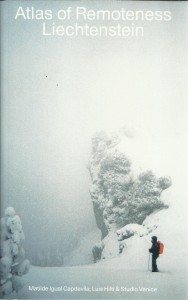
― Javier Rivera Linares, architect, doctorate from the Polytechnic University of Valencia (UPV) with the thesis “Towards a new landscape identity” (2015), directed by Enric Batlle i Durany (UPC) and Fernando Gaja Diaz (UPV); designer of interventions in public spaces such as the Reorganization of Access to Gulliver Park; professor at CEU Universidad Cardenal Herrera; prolific author of both books and articles for scientific journals; lecturer; Currently he is developing an international architecture workshop “ConectA” with the founding architects of the Athenian studio AREA (Architecture Research Athens) on the design of coastal scenery; He has also carried out interventions in museum spaces, such as “A garden in the Museum!”, at the IVAM, on the occasion of International Museum Day 2023.
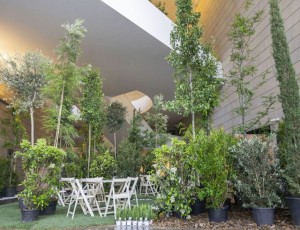
“A garden in the Museum!”, at the IVAM, on the occasion of International Museum Day 2023, by Javier Rivera and others.
― Theresa Wilshusen (Kansas City, Missouri, currently resides in Valencia), artist, familiar with the work of Robert Smithson in an extensive and intense way. “Theresa often experiments with various materials, manipulating them to achieve a certain desired result or simply exploring a new medium. She likes to incorporate maps and texts into her work as an identifier that the viewer can relate to. Her work is often motivated by geographical images as well as found natural objects” [from her CV https://www.twilshusen.com/about-in-spanish].
― Ignacio Díez Torrijos is an Agricultural Engineer and Master in Landscape Architecture. Doctor from the Polytechnic University of Valencia. 2015
From 2015 to 2023 he has developed his professional work as: Coordinator/founder of cercle. www.cercle.es. Currently he is an assistant professor in the department of urban planning in the area of Urban Planning and Territorial Planning. Polytechnic university of Valencia.
He has developed works in the field of landscape such as the following: Turia Garden Plan. Valencia City Council. 2024. Special Protection Plan for Ciutat Vella de Valencia. Approved in 2020. Valencia City Council. Andorra Green Infrastructure Sector Plan. Approved in 2018. Government of Andorra. Alzira Green Ring. 2017. Alzira City Council. Territorial Action Plan for the Protection of the Orchard of Valencia. 2010. Green Infrastructure Plan for the Coast of the Valencian Community. Approved in 2018. Department of Housing, Public Works and Territorial Structure. Valencian generalitat. Landscape requalification project for the surroundings of Serrería and Estación del Cabanyal. 2023. Valencia City Council. Landscape project for the historic garden of the Blasco Ibáñez Museum (Valencia). 2020.
― Chele Esteve Sendra, design engineer, professor at the UPV Drawing Department, teaches classes at the Faculty of Fine Arts on Project Methodology, Basic Design and Creativity, Models and Prototypes, and others. Ex Academic Director of Master’s Degree in Industrial Design en Higher Polytechnic School, in Universidad de Nebrija (Madrid). Among other publications: Martínez Torán, Manuel; Esteve Sendra, Chele (2022): “Interiorismo naval de los años 50 y 60: Martínez Medina, una referencia en España”, en Además de: Revista Online de Artes Decorativas y Diseño, 8, 139 – 172. Lillo Giner, Santiago; Rodrigo Molina, Angeles; Esteve Sendra, Chele (2021): “Metodología para la restitución gráfica de un edificio desaparecido. La Casa de Armas de Valencia”. EGA. Revista de expresión gráfica arquitectónica, 43 (26), 96 – 109. Esteve Sendra, María Consuelo (2016): “Gummy, morbidez y descanso para China”. Experimenta, 7 (1), 68 – 69. Portales Mañanos, Ana; Esteve Sendra, María Consuelo; Ricardo Moreno Cuesta; Magal Royo, Teresa (2012): “Bamboo, from traditional crafts to contemporary design and architecture”, Procedia – Social and Behavioral Sciences (51), 777 – 781.
― Pablo Ávila Martínez, architect, degree from the Polytechnic University of Valencia, has completed internships in the Urban Planning Department of the Segorbe City Council and in the Grespania Cerámica company, in the technical solutions department; assistant in the studio of Víctor Sánchez Ltd; experience such as public relations, cultural management at the Luis Vives Residence Hall and event organization.
PROGRAM
The workshop will take place at the La Posta Foundation, on Calle Pintor Fillol, 2, València, in the Botanical Garden of València, on Calle Quart, 80, València, and at the Faculty of Fine Arts, UPV, on the Camino de Vera, s/n; between April 15 and 30, 2024, from Monday to Thursday from 4:30 p.m. to 8:00 p.m., according to the following program:
― Monday, April 15, 2024:
4:30 p.m.: Introduction by the workshop director.
4:45 p.m.: Conference by Javier Rivera Linares: “Landscape identity? the limit as an opportunity.”
5:45 p.m.: Case presentation; debate with participants.
6:15 p.m.: Presentation by Guillem Cervera: some cases about a way of looking at the territory and the landscape: 1) two fundamental works by Robert Smithson: «A tour of the monuments of Passaic, New Jersey» (1967) and “Frederick Law Olmsted and the dialectical landscape” (1973); 2) by Gordon Matta Clark: “Reality Properties: Fake Estates” (1973);
7:15 p.m.: 3) a summary of “The Red Desert” (1964), by Antonioni, focused on entropic landscapes.
7:45 p.m.: Initial debate on the entropic landscape.
― Tuesday, April 16, 2024:
4:30 p.m.: Presentation by Matilde Igual Capdevila: “Straight lines and detours: exploration and experimentation in remote landscapes.”
5:30 p.m.: case presentation; debate with participants.
6:15 p.m.: Presentation by Theresa Wilshusen: “The representation of identities in the small details that define the space and in its interrelation with what is built in the territory.”
7:15 p.m.: case presentation; debate with participants.
― Wednesday, April 17, 2024:
4:30 p.m.: field visit guided by Matilde Igual Capdevila: “A space-time walk Faitanar-Sociópolis-La Torre.”
― Thursday, April 18, 2024:
4:30 p.m.: field visit guided by Theresa Wilshusen: “The straight line that takes us to the end of the city”, a straight line route from the Colón metro station to the Entrada del Francés, which will allow us to go seeing how the accumulation of city layers occurs during history.
― Monday, April 22, 2024:
4:30 p.m.: Presentation by Guillem Cervera Pascual: “Historical Sites and Cultural Landscapes (with special reference to symbolic ones), in international, Spanish and Valencian regulations”;
5:30 p.m.: case presentation; debate with participants.
6:00 p.m.: Presentation by Guillem Cervera: “Contributions to the methodology for the declaration of a Historic Site or Cultural Landscape, from the Art of the Territory artistic current (Public Art, Artistic Activism, Spurensicherung [Traces of Memory], ”The direct language of reality”, the “ethnological turn”): recovery of vestiges; examples.”
7:00 p.m.: Presentation by Pablo Ávila, animation for the development of looking exercises, appreciating the entropy in the territory and the landscape, and its materialization in different formats, opening a communication channel on the internet for consultations.
― Tuesday, April 23, 2024:
4:30 p.m.: Presentation by Ignacio Diez Torrijos: application to Historic Sites and Cultural Landscapes of urban planning, landscape and strategic environmental evaluation procedures, with special reference to public participation processes and exhibitions for this purpose.
5:30 p.m.: workshop day, with contributions of materials by the participants; with image projection; debate and possible choice of cases among the proposals presented, for presentation on the last day of the workshop, if applicable.
― Wednesday, April 24, 2024:
4:30 p.m.: field visit guided by Javier Ribera: “New channel and old channel: 2 rivers, 2 identities.”
― Thursday, April 25, 2024:
4:30 p.m.: field visit guided by Guillem Cervera Pascual: “A possible Historical Site: La gola del Perellonet”.
― Monday, April 29, 2024:
4:30 p.m.: Presentation by Pablo Ávila: summary of the issues that have been raised online or directly, to open the way to a broader debate.
5:30 p.m.: sharing of all experiences during the guided tours; projection of images, those taken by the participants; sample of the records carried out; presentation by the participants of proposals for exposing the results of the analyzes carried out on the landscapes.
6:30 p.m.: organization of the exhibition for assembly the next day.
― Tuesday, April 30, 2024:
4:30 p.m.: assembly of the exhibition in the Editorial UPV Exhibition Space
7:00 p.m.: inauguration.
The result of the perspective of the participants in the workshop will be shown, on the entropic landscapes studied in guided field visits, with the purpose [simulated, because it is a practical exercise], of encouraging a process of public participation, such as and as required by the administrative procedures for the declaration and organization of “Historic Sites” and “Cultural Landscapes”, where each participant will show their concerns and respond to the objective of the workshop.
FORM OF PARTICIPATION
Those interested in participating in the workshop must register here
Minimum number of places 8 and maximum 20.
REGISTRATION FEES
€75.00 – Alumni UPV PLUS
€75.00 – UPV Student
€75.00 – UPV Staff
€100.00 – General public


